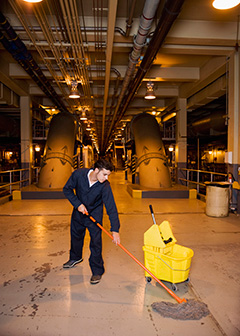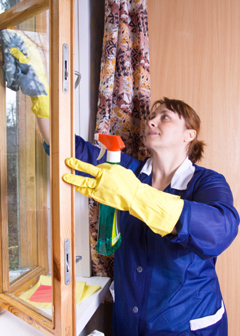Summary

| Quick Facts: Janitors and Building Cleaners | |
|---|---|
|
$22,210 per year
$10.68 per hour |
|
| Less than high school | |
| None | |
| Short-term on-the-job training | |
| 2,310,400 | |
| 11% (About as fast as average) | |
| 246,400 | |
What Janitors and Building Cleaners Do
Janitors and building cleaners keep many types of buildings clean, orderly, and in good condition.
Work Environment
Most janitors and building cleaners work indoors, but some work outdoors part of the time, sweeping walkways, mowing lawns, or shoveling snow. Because office buildings are usually cleaned while they are empty, many cleaning workers work evening hours. The work can be physically demanding and sometimes dirty and unpleasant.
How to Become a Janitor or Building Cleaner
Most janitors and building cleaning workers learn on the job. They do not need formal education.
Pay
The median hourly wage for janitors and building cleaners was $10.68 in May 2010.
Job Outlook
Employment of janitors and building cleaners is expected to grow 11 percent from 2010 to 2020, about as fast as the average for all occupations. While overall job prospects are expected to be favorable, those with experience are likely to have the best opportunities.
Similar Occupations
Compare the job duties, education, job growth, and pay of janitors and building cleaners with similar occupations.
O*NET
O*NET provides comprehensive information on key characteristics of workers and occupations.
Contacts for More Information
Learn more about janitors and building cleaners by contacting these additional resources.





